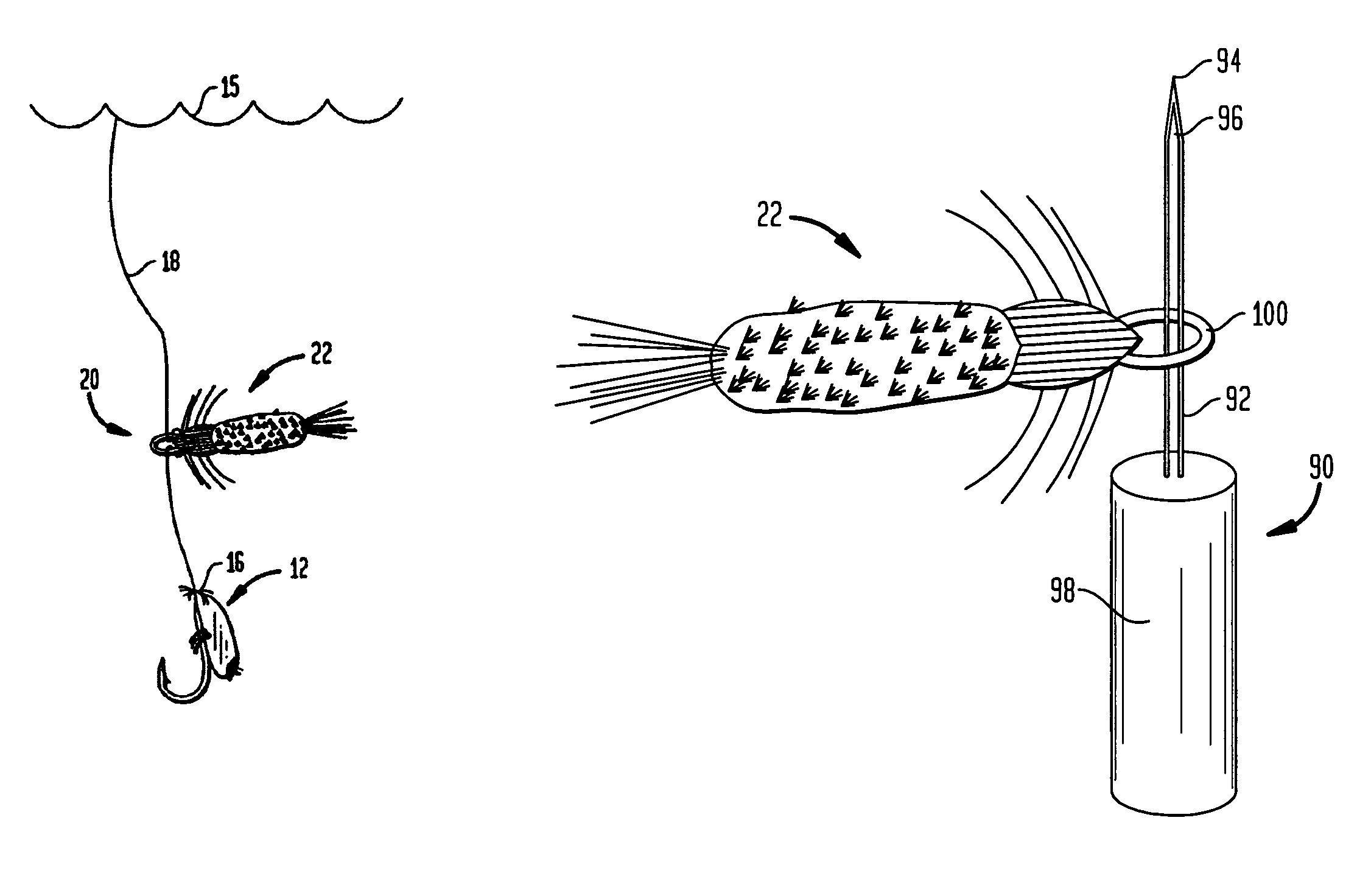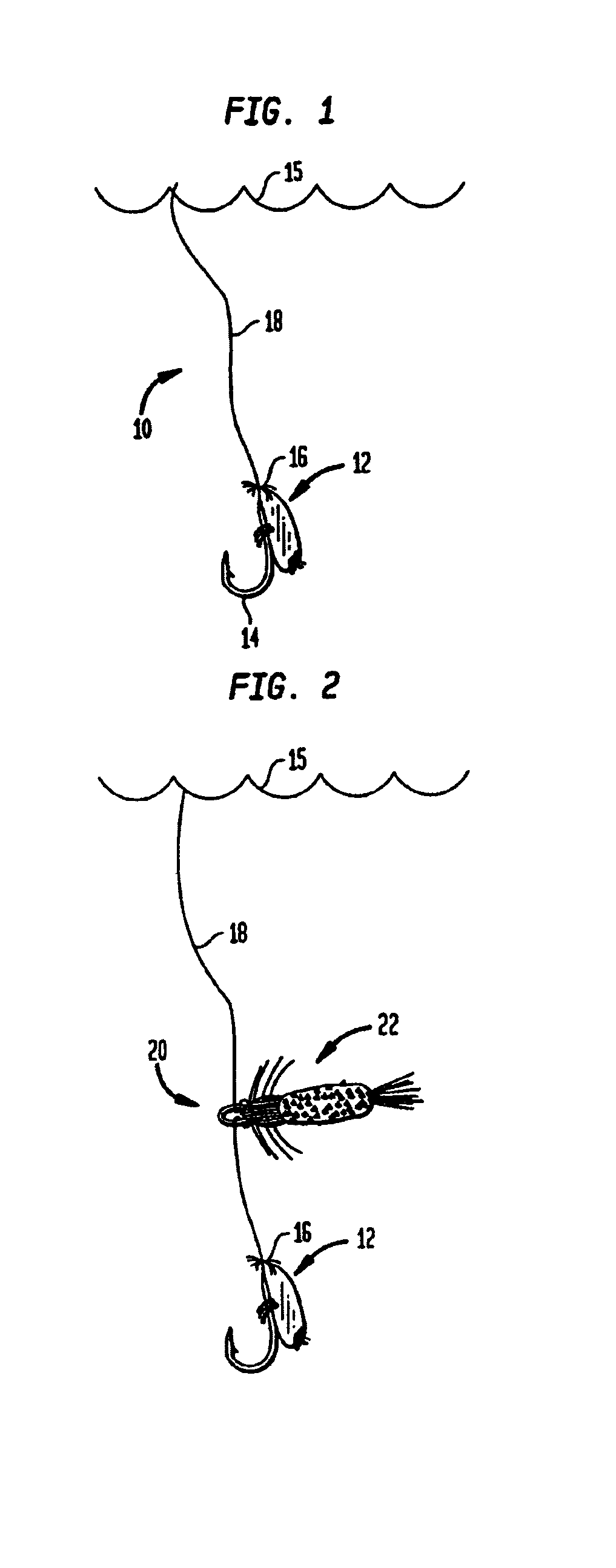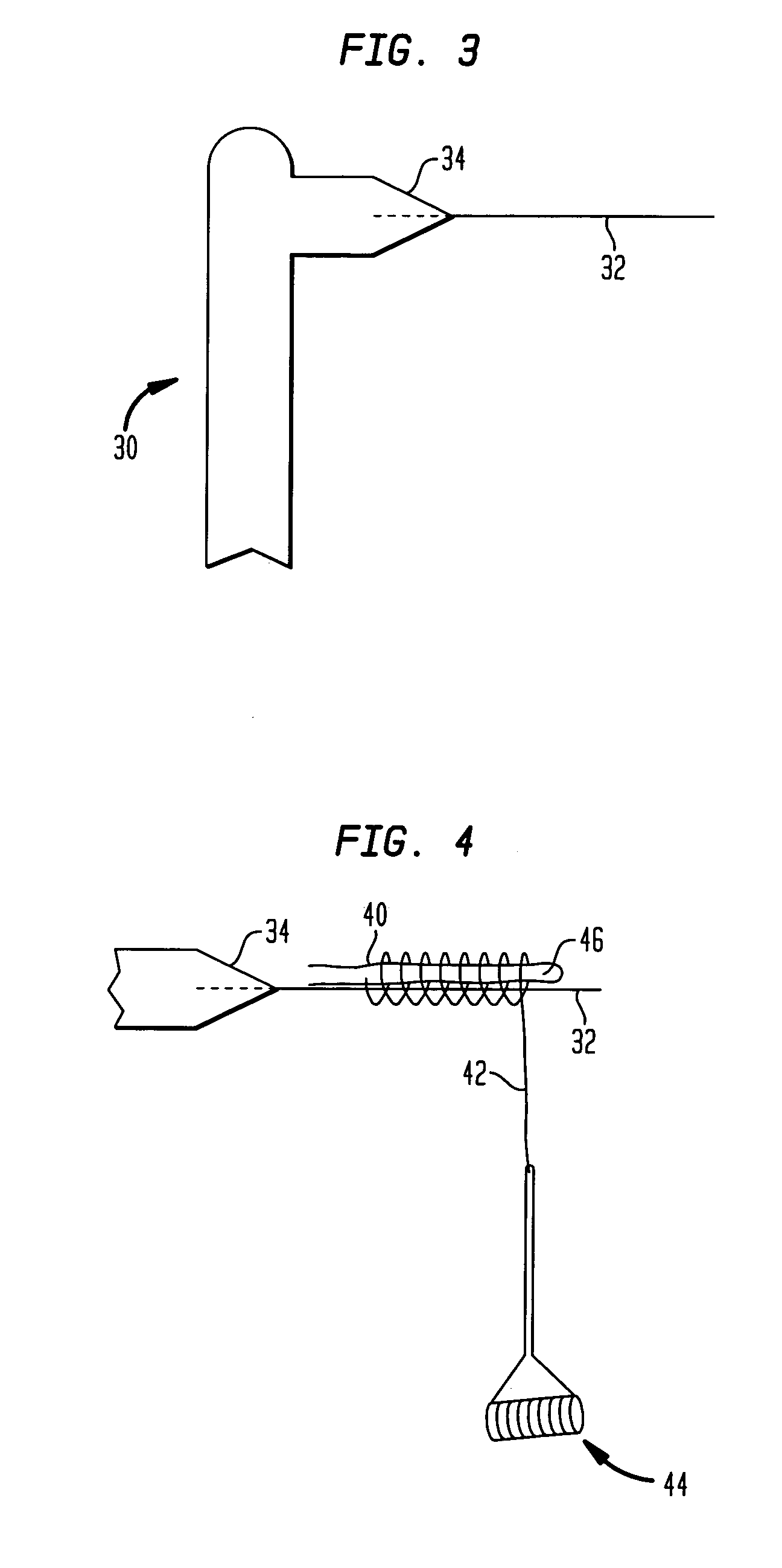Fishing fly and method of fly fishing
a fly fishing and fly technology, applied in the field of fly fishing apparatus and methods, can solve the problems of hazard to the hand of anglers, time-consuming and cumbersome altering the flies on the line, and great frustration for those with poor eyesight or without the nimblest of fingers,
- Summary
- Abstract
- Description
- Claims
- Application Information
AI Technical Summary
Benefits of technology
Problems solved by technology
Method used
Image
Examples
Embodiment Construction
[0038]In accordance with a preferred embodiment of the invention, apparatus and methods are provided for improved fly-fishing.
[0039]Advantageously, a fly-fishing fly that does not require the line to be disconnected to change or remove a fly is presented. The flies can be added, removed, or pushed up the leader without the need for new knots thus greatly speeding and simplifying the changing of flies.
[0040]Another advantage is that two or more flies can be fished without tangles and without the potential of the free-swinging fly hooking the angler or fouling in the landing net when landing a fish.
[0041]Another advantage of the current invention is that the learned aversion of fish to the hook shape and to objects that do not orient correctly with regard to the water current is overcome.
[0042]The current invention also advantageously provides a soft fly body, which leads to a longer retention time by a fish, enhancing strike detection and hookups. The ability of the angler to detect ...
PUM
 Login to View More
Login to View More Abstract
Description
Claims
Application Information
 Login to View More
Login to View More - R&D
- Intellectual Property
- Life Sciences
- Materials
- Tech Scout
- Unparalleled Data Quality
- Higher Quality Content
- 60% Fewer Hallucinations
Browse by: Latest US Patents, China's latest patents, Technical Efficacy Thesaurus, Application Domain, Technology Topic, Popular Technical Reports.
© 2025 PatSnap. All rights reserved.Legal|Privacy policy|Modern Slavery Act Transparency Statement|Sitemap|About US| Contact US: help@patsnap.com



